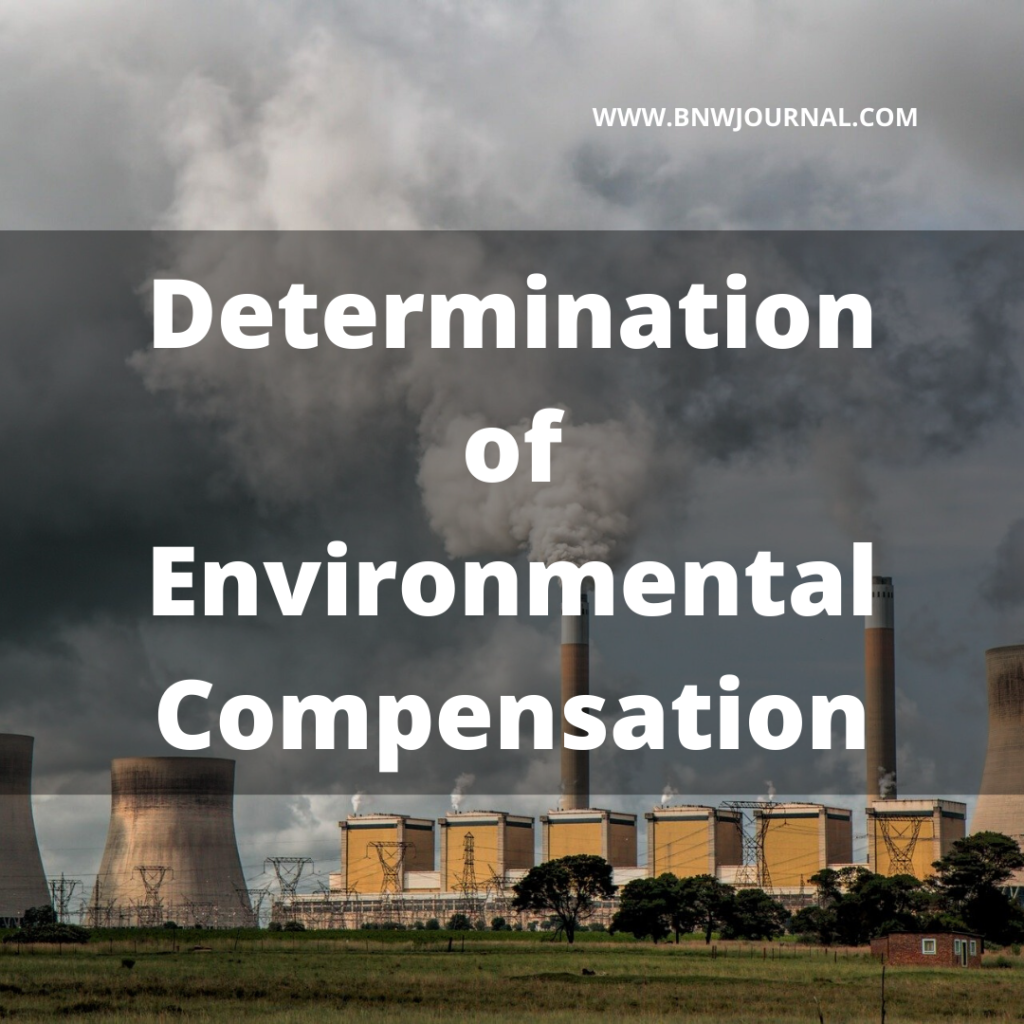![]()
Introduction
The principle of environmental compensation is to avoid, minimize, restore, or compensate for the damage to biodiversity due to human activities. With environmental degradation in the previous decades it becomes necessary to implement such policies.
Historical Background
The significant improvement in environmental adjudication starts with reading the right to clean the environment in the right to life under article 21of the constitution[1].

For implementation for this the Law Commission of India, recommended the establishment of ‘environmental courts’[2].
The legislature after recommendations of law commission enacted the National Green Tribunal Act 2010 (NGT Act). It is also to give effect to obligations under Stockholm and Rio conferences. However the Act does not prescribe any minimum or maximum amount of compensation that needs to be given. Only guidelines are there, to apply the principle of sustainable development and polluter pay principle. And also precautionary principle while passing an award or order.
(i) Sustainable development is, “development that meets the needs of the present without compromising the ability of future generations to meet their own needs”[3].
(ii) The polluter pays principle endeavors to ensure that the polluter should, in principle, bear the cost of pollution with due regard to the public interest[4].
(iii) The precautionary principle in the context of municipal law requires that-
First, environmental measures undertaken by governmental authorities must anticipate, prevent, and attack causes of environmental degradation.
Second, where there are threats of serious and irreversible damage to the environment, the lack of scientific certainty should not be used as a reason for postponing measures to prevent environmental depredation.
Third, the onus of proof is on the polluter to demonstrate that the measures taken are environmentally benign[5].
However NGT’s judgment seems arbitrary as there is no defined way for compensation.
Some cases of NGT
1. Goa Foundation v. UOI[6]
In this case the tribunal adopted SC adaptation in determining compensation where SC held that project proponents have to pay 10% of the sale proceeds as compensation.
2. Forward Foundation v. State of Karnataka[7]
Despite the serious environmental damages, the tribunal held a mere 5% of the project cost as compensation.
3. Krishna Kant Singh & Ors. Vs. National Ganga River Basin Authority[8]
The penalty levied is negligible & the amount is mere 0.07% of the annual turnover of the company.
5. DSM Sugar Distillery Division v. Shailesh Singh & Ors.[9]
Here also in this case the amount of penalty is a mere 0.05% of the annual turnover of the company.
6. Krishna Kant Sharma v. Triveni Engineering Industries Ltd.[10]
Similarly in this case the tribunal held the amount of compensation negligible, 0.012% of annual turnover.
7. Ajay Kumar Negi v. U.O.I.[11]
In this case the tribunal failed to hold government authority accountable.
8. Art of Living Case
This is the most famous case in the history of environmental compensation in India. Here the initial estimate of the expert committee based on simple visual assessment held compensation approximately INR 120 crores. This later changed to INR 28.73 crore. Finally tribunal asked Art of Living to deposit INR 5 crore (not a penalty).
Formula by CPCB
After having so many controversies of NGT the Centre Pollution Control Board (CPCB) gave a general formula for environmental compensation. A committee was constituted by the Chairman, CPCB to arrive at a formula for calculation of Environmental Compensation (EC). The Committee prepared a policy named as “Methodology for Assessing Penalty & Environmental Compensation and Action Plan to Utilize the Fund”. The formula for calculation of EC is as follows:
EC=PI x N x R x S x LF
Where, EC is Environmental Compensation in (₹)
PI = Pollution Index of industrial sector
N = Number of days of violation took place
R = Factor in Rupees (₹) for deriving the EC, which may be a minimum of 100. Maximum of 500.
S = Factor for the scale of operation which could be based on small/ medium/ large industry categorization; which may be 0.5 for micro or small, 1.0 for medium and 1.5 for large units
LF= Location factor
These formulas are now regularly been used by the CPCB for imposing EC on polluting Industries. CPCB has also provided minimum and maximum limits of penalties along with these formulas.
Conclusion
The NGT was established to ensure proper justice in environmental issues with expert advice. However because of lack of scientific analysis; arbitrary decisions are given by tribunal like reducing compensation from 10% to negligible amount. Some influential people also seem to affect the compensation amount in many cases like the Art of living cases. However, now the proper formula to ensure speedy and accurate justice to issues related to the environment is enacted by CPCB.
[1] Rural litigation entitlement Kendra v state AIR 1988 SC 2187 (This case added Right to clean environment under article 21)
[2] Law Commission of India, Report no.186 (September 2003)
[3] See United Nations General Assembly, Brundtland Commission, Our Common Future (1987), at 43
[4] Rio Declaration on Environment and Development, the United Nations Conference on Environment and Development, June 1992, Principle 16
[5] See Vellore Citizens Welfare Forum v. Union of India, AIR 1996 SC 2715
[6] Writ Petition (civil) no.435 of 2012
[7] O.A. 222/2014
[8] OA No. 328/2014
[9] Review Application no. 13/2015 in OA no. 35/2015
[10] OA No. 317/2014
[11] OA No. 183(THC) of 2013



0 Comments